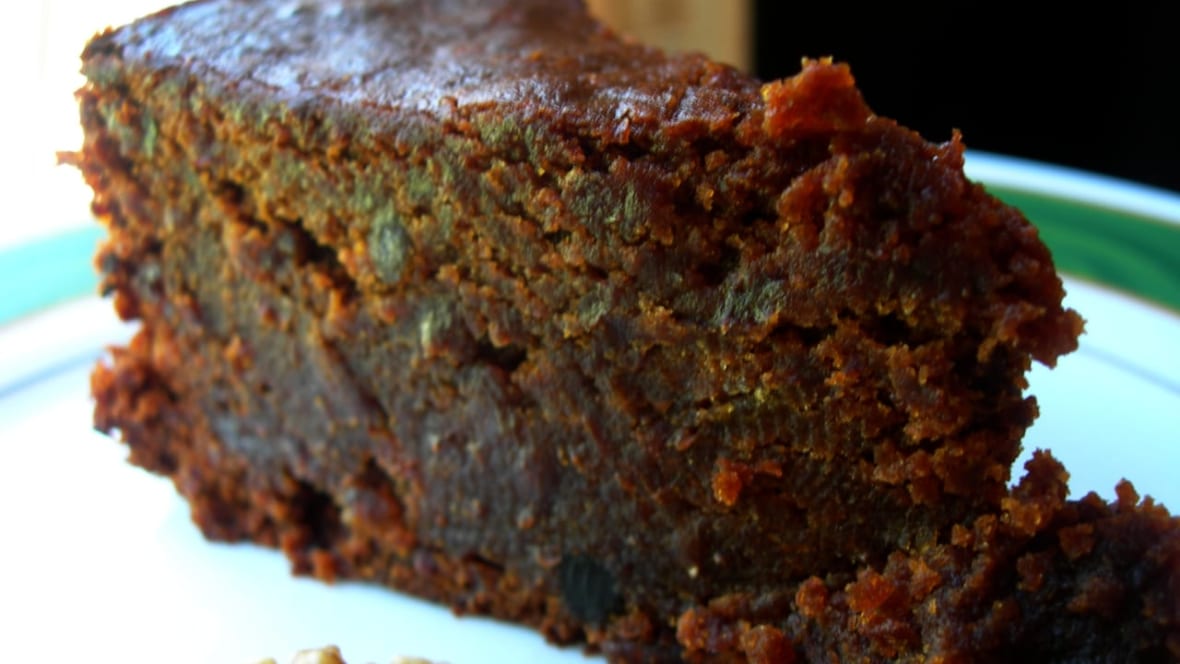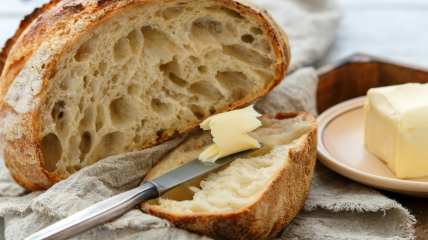Forget the fruitcake—black cake should be the flavor of the season
Why settle for the stale seasonal fruitcake when its Caribbean cousin is much more delectable?
When you grow up poor in the projects, as I did, you don’t have the luxury of not eating food that doesn’t look appealing. In my early years, I had my fill of powdered eggs, bologna, and the much-maligned government cheese.
But that government food tasted like my uncle’s succulent ribs compared to one of the worst inventions I’ve ever tasted — fruitcake.
There’s nothing wrong with the cake itself. It contains flour, butter, eggs and sugar — a standard cake recipe. It’s the dried fruits like apricots, raisins, figs, or whatever else that turn me off.
At its best, a fruitcake is a mish-mash of stuff that makes you ask, “Why?” As in, “Why would anyone bake this, let alone eat it?”
Thankfully, Afro-Caribbean people created a different type of fruitcake that looks and tastes good. While fruitcake contains chunks of dried fruit, black cake soaks the fruit in alcohol for a long time and then blends it.
Let’s explore the difference between fruitcake and black cake.

Fruitcake
Fruitcake goes back to Roman times. According to a history recounted on PBS, the Romans made the cake with a mixture of dried fruit, honey, barley and wine, and it became a staple for hungry soldiers. European colonists brought fruitcakes to America.
For reasons that still baffle me, fruitcake took off. Bakeries started shipping fruitcakes through the mail in 1913, according to National Calendar Day. In 1928, the USDA recommended formulas and recipes for Christmas fruitcakes. The phrase “nutty as a fruitcake” entered the American lexicon in the 1920s or ‘30s, a reference to the large number of nuts in the cake.
The USDA also recognizes the love-it-or-hate-it perception of fruitcake. “Whether you love or loathe the holiday fruitcake, none would be possible without the farmers who produce the ingredients necessary to enjoy (or poke fun at) the long-standing holiday tradition,” the organization notes.
It’s also hard to kill a fruitcake. It can last a month at room temperature, four months in a refrigerator, and a year in a freezer. The duration that fruitcakes can last might also account for their popularity in the early 20th century. Delivering an item via rail or horse took a long time, and a fruitcake stayed fresh.
Speaking of staying fresh, conservators for the Antarctic Heritage Trust found a 106-year-old fruitcake on Cape Adare. “Although the tin was in poor condition, the cake itself looked and smelt (almost) edible,” the trust said.
Thank you, but no. Please pass the government cheese.
Black cake
A century-old black cake may exist someplace. According to History.com, black cake’s predecessor, plum pudding, dates back to the 15th century. Oliver Cromwell, the English politician, banned plum pudding for a time because he saw it as a symbol of paganism. In the early 1700s, after the Crown regained the throne, King George I served plum pudding at Christmas dinner, and it became an English staple.
The British brought plum pudding to the Caribbean, and over time, the islands’ inhabitants put their spin on the Christmas treat.
The most famous black cake recipe came from an unlikely source. The poet Emily Dickinson sent her black cake recipe to a friend in 1863, and cooks worldwide have tried to make it as Dickinson did. Most adjust it, but you can see her recipe on the Harvard Library website.
Trinidadian Black Cake is the recipe you’ll most often see, though they’re all reasonably close. The types of fruit and alcohol vary, with some preferring currants, figs and dates to prunes, raisins and apricots. You can use whatever fruit combination you want.
It would be best if you had a blender and a lot of time. A WHOLE lot of time.
Black cake brings a new meaning to the word patience since cooks often macerate — or soak — the fruit in rum and red wine or brandy for months or even a year. Experienced black cake cooks roll their eyes at recipes that call for soaking the fruit for a week. The alcohol pulls out the flavor of the fruit and gives the cake a richer taste, so a week doesn’t cut it.
The first time I had black cake, I mistook it for a chocolate cake because it looked just like it. But it tasted nothing like it — in a good way. I started researching black cake history, and upon learning it’s a cousin of the fruitcake, I asked myself:
“Where have you been all my life?”
Black cake is a terrific alternative to fruitcake. So you’ll need to start soaking those dried fruits right now — for next year.
Recipes
While I typically drop a recipe of my own, I like the following black cake recipes — though I soak the fruit for at least three months, which is still way too short for some purists.
That said, if you want to give it a try this holiday season, this recipe found in the New York Times uses prunes, raisins and currants — and has a short 48-hour soak time. Another variation on the Jamaican black cake uses port wine and dark rum.
Expecting a big crowd? The Washington Post published Emily Dickinson’s black cake recipe, a version few people try because it’s huge and serves 60 people.

Ray Marcano is a longtime, award-winning journalist who has written and edited for some of the country’s most prominent media brands. He’s a former national president of the Society of Professional Journalists, a two-time Pulitzer juror, and a Fulbright Fellow.
TheGrio is FREE on your TV via Apple TV, Amazon Fire, Roku, and Android TV. TheGrio’s Black Podcast Network is free too. Download theGrio mobile apps today! Listen to ‘Writing Black’ with Maiysha Kai.


